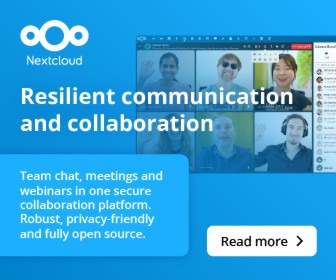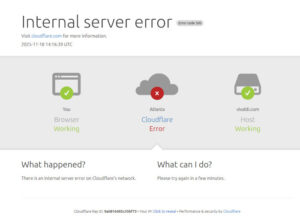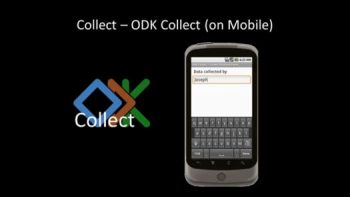Monopolies are like porn. I can’t describe one to you but I know one when I see it. OK, so maybe the term monopoly is technically incorrect in this instance…but not by much. In my area of service it’s Time Warner Roadrunner, AT&T DSL or nothing. While there is competition, there isn’t anyone that can deliver the same speeds as Time Warner, making the price difference between the two services make sense.
The idealist would say that this is a good situation. There are products to serve almost everyone, regardless of income. You get what you pay for and when you pay less you should expect to receive less.
 AT&T offers their basic DSL service starting at $14.95 a month. People might ask themselves why it’s so inexpensive when compared to Time Warner Roadrunner service. If they had a chance to run each service side by side the answer would be obvious. But it’s not all bad. The AT&T customer gains the opportunity to learn a new technological term — buffering.
AT&T offers their basic DSL service starting at $14.95 a month. People might ask themselves why it’s so inexpensive when compared to Time Warner Roadrunner service. If they had a chance to run each service side by side the answer would be obvious. But it’s not all bad. The AT&T customer gains the opportunity to learn a new technological term — buffering.
However, the future just got real for Time Warner in Austin, Texas. Google Fiber has rolled into town and a big deal is being made over it. The local news has been generous and loud with their coverage of Google Fiber. They demonstrate the speed differences with gusto. Time Warner is attempting to stem the flow of customers leaving by offering to upgrade existing customers for free. Yeah, that’s right, for free. This coming from the company that refused to work with us to bring Internet access to financially challenged kids in Austin.
This is what they’ve come up with:
“Time Warner Cable today announced that it will be significantly raising internet speeds for its customers in the Austin area. These customers will not have to pay any extra money for these new speeds, but will see their download speeds, in some cases, rise by over 600%. The speed increase will begin rolling out to customers sometime this summer.”
When I heard that the Austin area was going to get these free speed upgrades I had conflicting reactions. I was happy for Austin but not so much for our little town. We are too far away from Austin to get in on this. Further searching proved me wrong.
“Along with Austin, the additional areas receiving these new speeds include Round Rock, Cedar Park, Leander, San Marcos, Elgin, Marble Falls, Lockhart, Bastrop, Fredericksburg, Taylor, Smithville, Wimberley, Liberty Hill, Lago Vista, Buda, Kyle, Elroy, and Lakeway.”
Yep, Taylor, Texas most certainly qualifies as being in the Austin area. Giddiness and fuzzy warmth enveloped me. If there weren’t people in line-of-sight proximity, happy dances would have ensued. We will be raised from 20 down and 1.5 up to 50 down and 2.5 up. I can live with that. Then I got to thinking…
If all Time Warner customers are getting bumped up one tier it might be a good idea to pay for the next upgrade now so when this starts happening we will be upgraded from 50 Mbps to 100 Mbps. That sounds like a good investment, right? Yeah, I thought so too.
So I went to the Time Warner website and found the customer service chat link and clicked it. My voice is messed up by radiation treatments so trying to talk to me can be frustrating. But my voice isn’t nearly as frustrating as the message my computer monitor was displaying:

| [yop_poll id=”37″] |
You gotta be kidding me…right?
I know for an absolute fact that Time Warner’s backbone is made up of Linux and Unix servers. And they want to tell me that I need a Windows system to access their online chat support?
The problem is, who does one call to correct this? Tech support is useless. I don’t care who you get passed onto in the support ladder, they’re going to tell you that they have no control over matters like this. Trust me…I’ve tried.
I am going to attempt to run the tech support gauntlet and see what I can learn about this. I am fully expecting the same old, tired line, “the number of Linux users subscribing to our service doesn’t justify the added expense of making these changes.”
It may take a while but I will most certainly report back here with my findings. If you have any insight into this, tell us in the comments. What proprietary software or system is Time Warner using that it would exclude Linux? There are a lot of people way smarter than me and I bet some of them have answers. Your input will help.
Ken Starks is the founder of the Helios Project and Reglue, which for 20 years provided refurbished older computers running Linux to disadvantaged school kids, as well as providing digital help for senior citizens, in the Austin, Texas area. He was a columnist for FOSS Force from 2013-2016, and remains part of our family. Follow him on Twitter: @Reglue







I’d suggest the Window’s version of Firefox, under WINE. I know there’s been some success of this for Netflix also. I know it’s a kludge of a fix, but I’m going to suspect that their site is looking at the Agent ID, and is confused. Maybe just change the User Agent ID with some kind of plug in tool?
… perhaps they just parse the User-Agent…?
Firefox has an addon called “User Agent Switcher”. With this add on you can have your version of Firefox tell the server it’s a windows version of Firefox. It’s helped me get around sites like this a few times.
If you have an Anroid tablet or smart phone, try using that… I can’t imagine them denying the millions of Anroid users, even if its not in their list of supported platforms…
I’ve had AT&T for several years and I’ve only had one issue with them. The tech support people had told me that I had to have Windows to setup the replacement router several years ago. I went back and forth with the support rep and told him that I was running Linux when we set up the first router. We wound up getting a supervisor involved and eventually got the issue resolved, but it was a bit of a pain to get it done. I’m assuming the tech I got was green and didn’t know the router as well as he should have. That has been the only issue I’ve had with that remotely had to do with Linux.
I switched to ATT-Uverse a while back. They sent a tech out to set everything up. I took off from work that day so I could make sure there weren’t any issues with getting the Linux machines on the network. There were no issues after I updated the network configurations. Good luck with Time Warner.
The ISP system in the US is a mess. The end users are not actually the customers. The customers are the advertisers and content providers, note that I did not write content creators. Because the end users are not the actual customers, hardly any of end users needs are being met, and Internet access speeds are one of the slowest in the developed world. I have a brother who lived in Japan for a few years, and he indicated that for about $10 USD per month his download rate was about 100Mbps.
On the GNU/Linux tech support problem, I can only say that very few tech support personnel I’ve run into will help at all if I indicate that I run Debian. This includes items that have nothing at all to do with the host OS on the computer that I use to access the services provided. I have run into problems with built in email system filters that delete text attachments for meeting requests. The filter was designed to only allow meeting.ics names rather than the basic ics format. My email client created meeting requests in the correct format but sent out the attachment under a different name than MS Outlook. Knowing that tech support personnel are generally ill equiped to deal with actual technology issues, I did some basic tests with file names sent from both MS Outlook and my email client [Evolution]. I provided a detailed description of the entire problem, including the diagnosis with test results and files… well… 3 months later I was told the problem was that I was running a non-Windows OS… and after a very heated exchange and 2 more weeks of waiting, suddenly I no longer had a problem sending out meeting requests.
On the Google Fiber topic, see the ISP paragraph. Google Fiber will be exactly like the rest of the ISPs in the US. It will rise to dominance – maybe – and then gouge the end user. Guaranteed.
Another option would be to try Rekonq (a KDE web browser.) Under the Tools > Browser Identification menu you can choose to spoof quite a few different browsers.
Browsers should never have been allowed to send a user-agent string.
If websites couldn’t identify specific browsers, authors would be forced to code according to standards and broken browsers would be forced to be fixed or be left behind.
@Mike:
The market is what the market is… allowed to do xyz for a software product is kind of irrelevant to software… the user agent is a very useful tool, allowing on-line products to be tailored to specific markets. What should not be allowed is the inclusion of non-free or proprietary requirements in government and/or taxpayer paid for Internet sites and data access. Beyond the government question – which is horribly tilted [probably illegally as well] toward Redmond – “allowed to do” is irrelevant…
Just my 2 cents – of course…
Like others, I was going to recommend changing the browser user-agent string.
Thanks for your replies. If I had been thinking correctly, I would have added that I tried Rekonq, Firefox and Chrome with various agents with no success. I was going to suggest that it might be an active X control but that wouldn’t explain how Safari users were successful.
I will continue to get an answer for this but like many here, I am not optimistic about receiving an honest response.
@retf
By ‘allowed’, I mean allowed by the http protocol. Specifically, the IETF screwed up on RFC2616. User agent strings should never have been included in the http header. It became a crutch for broken browsers and bad developers.
By removing the ability to distinguish who or what is requesting the data, you force everyone to ‘play nice’.
I vehemently disagree that anything useful ever came from “allowing on-line products to be tailored to specific markets” with regard to user agent strings.
Is Time Warner Live chat VOIP or is it text. If it’s text I had no trouble getting to a chat form, as a new customer.
I’m in Australia.
Using Iceweasel on Debian I got the same “Minimum Requirements” garbage.
Changed my user agent string to Internet Explorer 8 and Iceweasel worked just fine.
This is exactly why user agent strings were a bad idea in the first place. It only leads to sloppy web sites and broken browsers.
Not only did I get through OK but I had a nice chat about me moving to Austin, with one of their “Analysts”
BTW, I’m using Firefox 27.0.1 on Linux Mint 16 MATE
Don’t many services have this problem? 🙁
Is anyone actually checking this out, I had no problems accessing Live Chat on Linux with Firefox and default UserAgent string, from Australia.
When in doubt, VirtualBox. It keeps all the “nasty” WIndows stuff enclosed in it’s own environment…..you get the usage of certain web-sites and apps, and you don’t have to give up tour Linux machine!
I’m running Cox cable inet here in Phoenix. I’ve never actually tried their online chat (and since I won’t agree to EULAs so no proprietaryware, if I had to someone else would quickly have my business), but from a number of people I’ve talked to, the reason the requirements are what they are is to allow the text chat folks to reach in (presumably with an ActiveX control) and “fix” settings such as email server on your computer from their end.
IOW, that’s tech support, NOT sales, which appears to be what you need.
Meanwhile, for those computer literate enough to setup their own internet config (or have someone else that can handle that), all the cableco really needs access to is the cable modem. The DOCSIS standard is in fact setup such that all firmware updates and modem config is handled from the cableco side (RF-interface), and in fact, for (their) security reasons, DOCSIS standard modems won’t even take upgrades or config from the user side. This is because everyone on a node is sharing the speed, and a modem boots up without any knowledge of its config other than perhaps remembering which channels it used last, so a vital part of the connection is downloading the modem’s (MAC-based, serial-number cross-checked) config file from the node head-end, telling it whether it’s even allowed to connect, configuring the allowed speed, etc. Only after it has that information available and is configured to use it, does it enable the bridge connecting you to the internet at all. Obviously if a user had control of that config information…
(FWIW, that’s yet another reason to buy separate modem and router, not a combined unit. While the router firmware on a combined unit is updated separately and is normally updatable from the user side unless you’re paying extra for their router management services as well, I strongly prefer a separate router… flashed with open source firmware such as the OpenWRT I’m running on mine… as a user-controlled firewall between my local network and theirs.)
So access to the modem is really all they need, and they already have that (tho if you’re upgrading have your modem’s MAC and serial number ready so they can configure their end to deliver the correct config for your new account speed, both IDs are normally on a sticker on the modem). Tho of course if you have an older, pre-DOCSIS-3 modem, you may need to replace it with a DOCSIS 3 certified model to take full advantage of the higher speeds.
Meanwhile, for sales, if a phone transaction is too difficult for you due to your voice, if TW’s anything like Cox, they should have retail stores around the area, and it may be easier to go in there. Take the modem or at least your modem’s Model, MAC and Serial number info with you, and they should be able to arrange an upgrade. You can also purchase a new modem there if yours is pre-DOCSIS-3, altho many computer and electronics retailers carry them too. (I bought my last one at Fry’s Electronics but last I checked Walmart, for example, sells ’em too.)
Oh, and if you do end up getting a new modem, I’m personally partial to the Motorola Surfboard brand myself. I’ve been very happy with their quality and by default they seem to have more detail available on the modem’s user-side information interface available at http://192.168.100.1 than some other brands. Most modems have /some/ information there (tho I’m told the cableco can entirely disable it if they wish), but the Motorolas seem to consistently (over the whole surfboard series) have more there than some other brands. YMMV, but that’s /my/ preference, and why.
Duncan
@tracyanne
I mentioned earlier that I did test it. I can make it work or fail depending entirely on the user agent string.
@Duncan
You are correct in that they use an ActiveX control for remote tech support, but that is optional for the support chat.
Sounds like I have pretty much the same setup as you: A router running OpenWRT as a firewall between their network and mine. Their Surfboard cable modem has built-in wifi, but I only use my own. I don’t trust them to stay on their side of things and out of mine.
Just go to the mobile site in your browser. No need to change user agent string.
It may use an ActiveX control on Microsoft systems, but on Apple Macs, it’s got to be different, I’m guessing Java-based. That means it’s supposed to be cross-platform.
You won’t get a straight answer out of tech support. You’d have to know someone on the engineering team to tell you any of that, and they’d be very wary of letting that slip out, especially to a public blogger like you, for fear of losing their own jobs. It is also entirely possible that they’re being granted “co-marketing dollars” to keep anyone but Microsoft and Apple OS’s out.
Remember, “it is very difficult to get a man to understand something when his paycheck depends upon him not understanding it.”
–SYG
What’s really scary is people are still running ActiveX and/or Java in their browsers. You can add Flash to that list too.
ActiveX, Java, and Flash : They should only activate in a browser via a big red button which says: “Please pwn my computer!”
I’m sorry, but the blogger really didn’t know this? Linux adoption has been slow for a long, long, time. That is why we have so many workarounds for this problem. Welcome to the Linux world, and if this is the most serious problem you have, count your blessings.
@lilricky
How would someone know before they had cause to try? If you are trying to suggest Mr. Starks had never seen an issue like this, I would point out that he mentioned in a comment that he had tried changing the user agent. I think it is a good thing for these things to be called out when found. Perhaps Time Warner will notice the story and address the issue, or perhaps they don’t mind appearing incompetent.
This isn’t really a Linux thing. It’s sloppy/lazy web development on Time Warner’s part. Good web development should be done to standards in a platform neutral manner, not some hodge-podge of special cases for specific browsers and platforms.
With regard to Linux adoption: It only remains slow on traditional consumer desktops/laptops due to Microsoft spending large sums of money to keep it that way. In every other segment of computing Linux has boomed. In a number of them it has completely dominated.
I’ve converted over 200 WinDOHs users’ boxes to Mint in the past year, absolutely free. Over a dozen of them have started doing the same thing for dunnohowmany others. Tick-tock, co-marketing weasels. Your whole model is entirely dependent upon dumba$$es.
I’m leaning towards agreeing with Mike on the desirability of user-agent strings. Maybe it’s time for everyone to change their user agent string to “An HTML-compatible browser?”